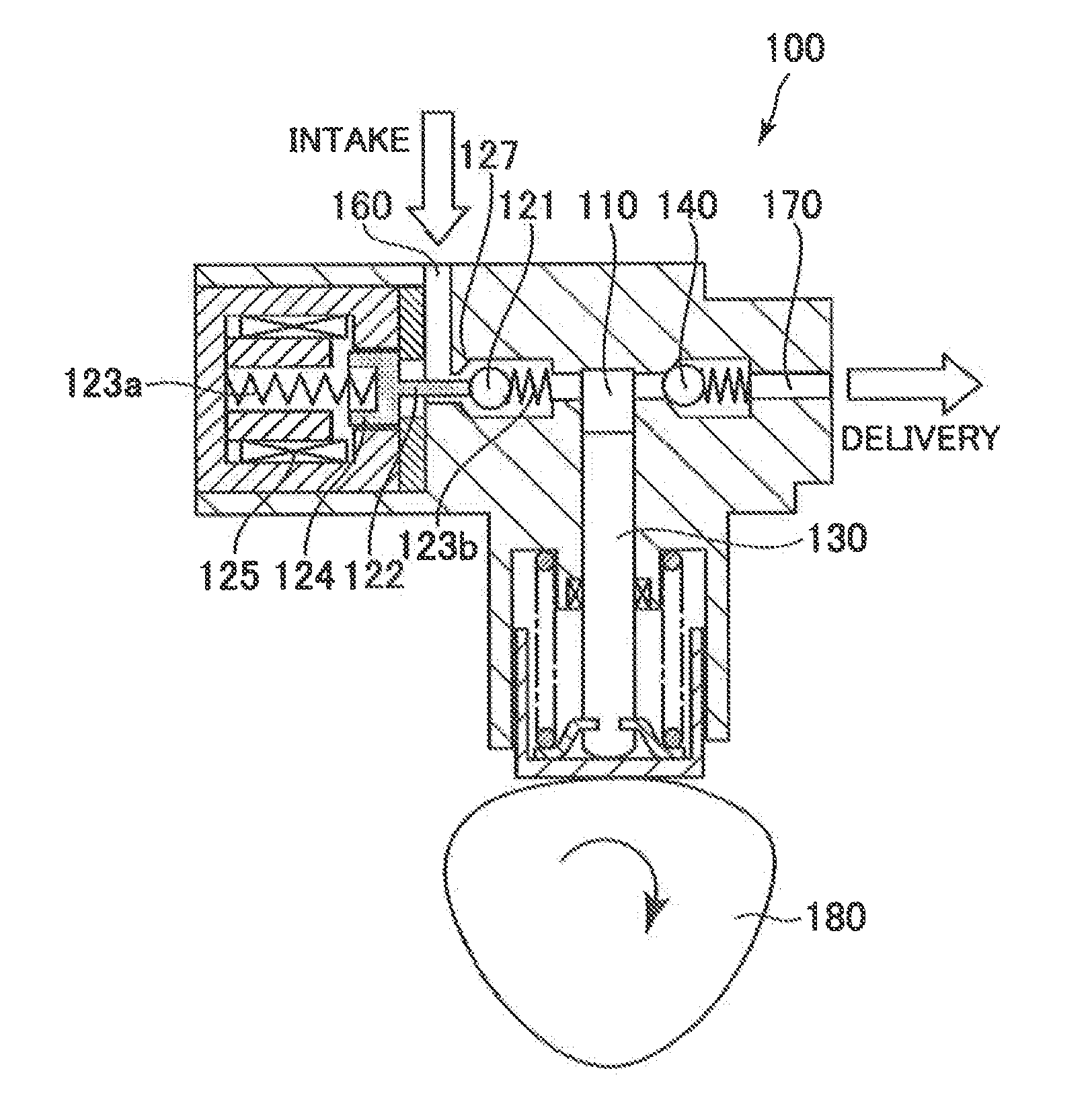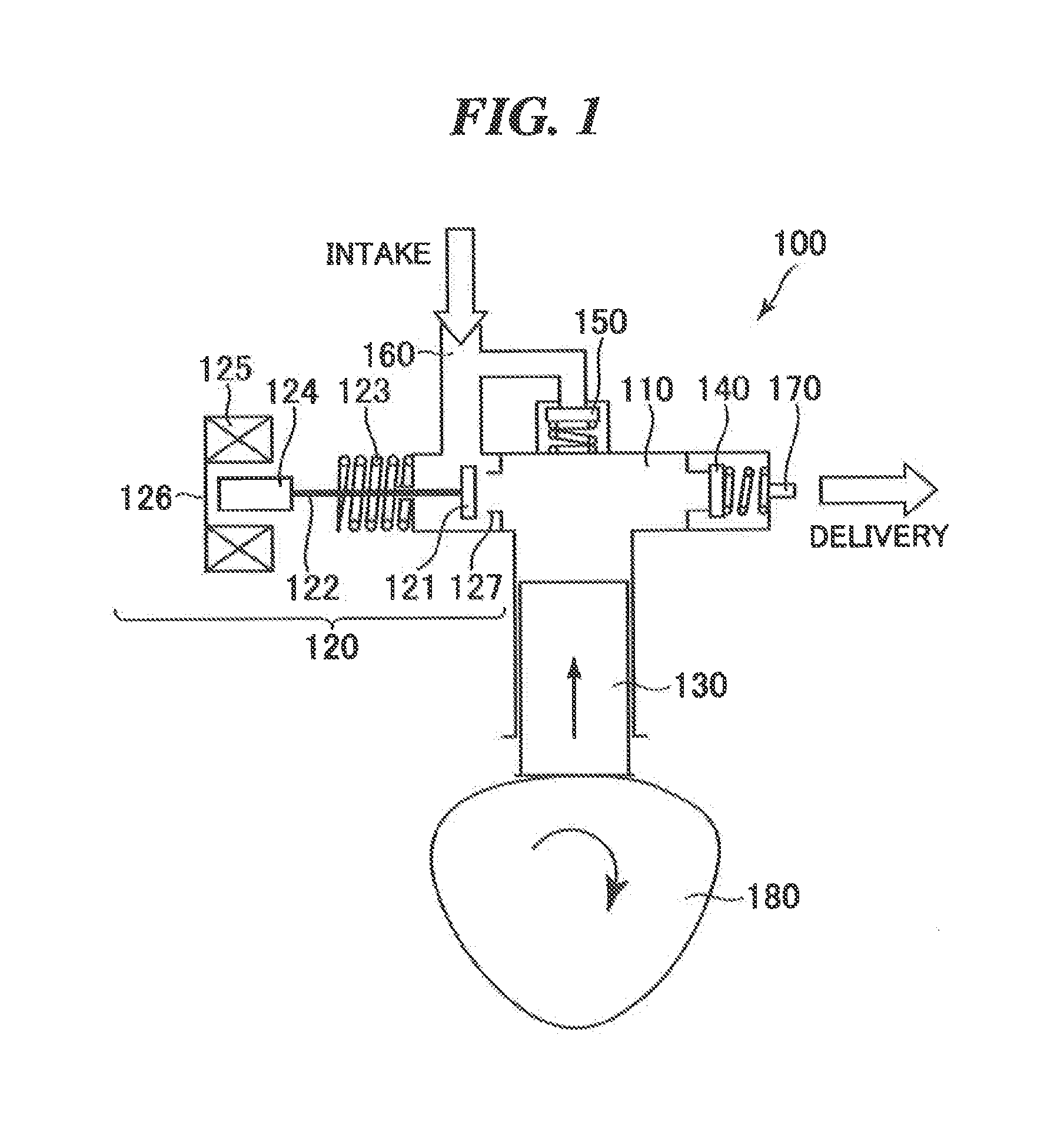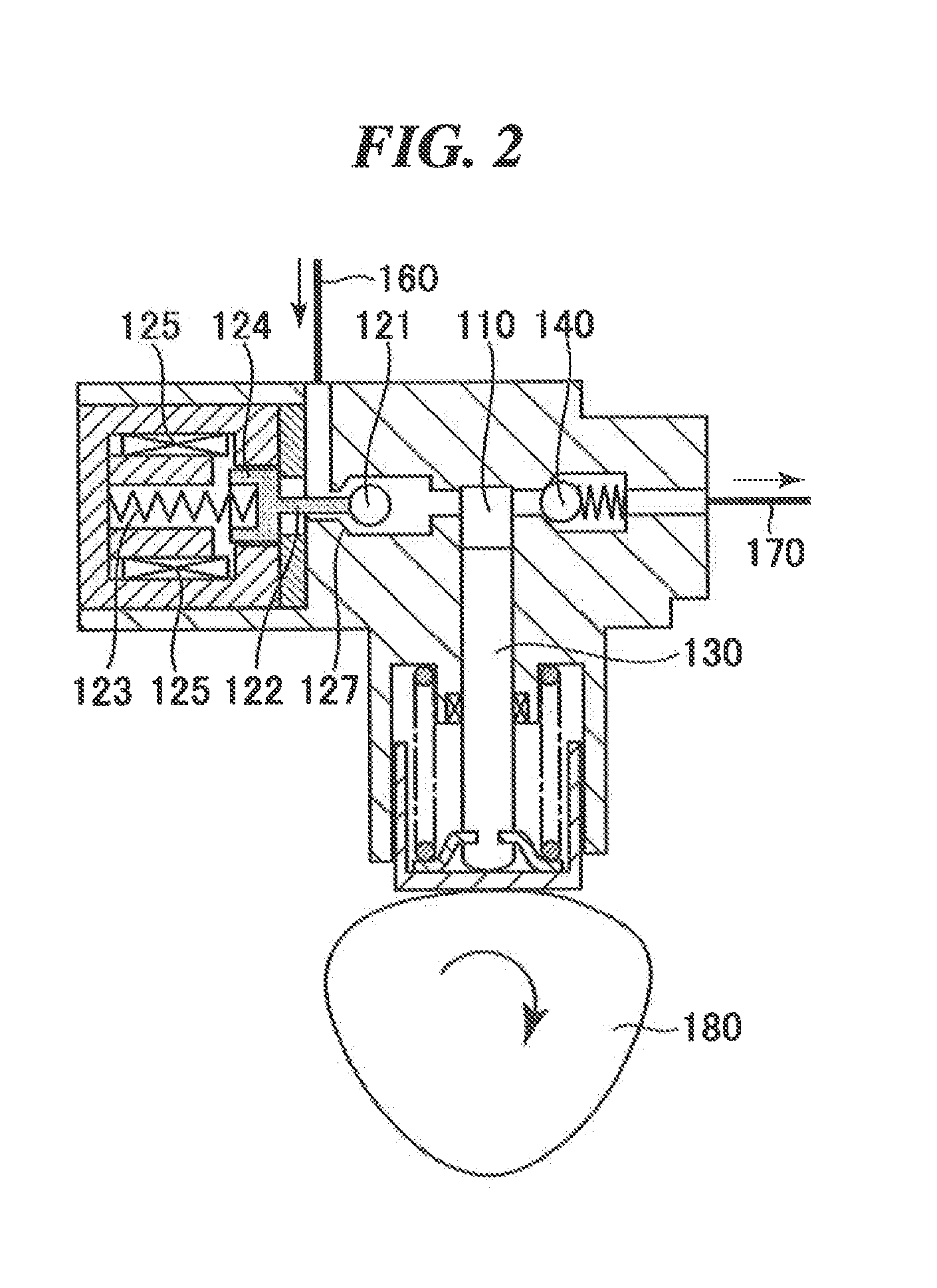Method and Control Apparatus for Controlling a High-Pressure Fuel Supply Pump Configured to Supply Pressurized Fuel to an Internal Combustion Engine
a high-pressure fuel supply and control apparatus technology, which is applied in the direction of fuel injection apparatus, electric control, charge feed systems, etc., can solve the problems of affecting dominating the overall noise of the engine, and generating impact noise, so as to reduce noise and efficiently control
- Summary
- Abstract
- Description
- Claims
- Application Information
AI Technical Summary
Benefits of technology
Problems solved by technology
Method used
Image
Examples
first embodiment
[0069]FIG. 6 exemplarily illustrates the control of a solenoid-actuated intake valve according to the present invention. The upper row in FIG. 6 illustrates the plunger movement of the movable plunger 130 reciprocating between the bottom dead center position BDC and the top dead center position TDC. The middle row in FIG. 6 illustrates the control current applied to the solenoid coil 125 and the lower row in FIG. 6 illustrates the movement of the intake valve 120, in particular the valve member 121, between the fully open position and the fully closed position.
[0070]The basic control, principle in FIG. 6 is similar to the control principle described with reference to FIG. 4, however, in accordance with the first embodiment of the present invention, after the movable plunger 130 has reached the top dead center position TDC and is moving again towards the bottom dead center position. EDC, control current is applied again to the solenoid 125 during a second time period ΔT2. During a th...
second embodiment
[0071]FIG. 7 exemplarily illustrates the control of a solenoid-actuated intake valve according to the present invention. The upper row in FIG. 7 illustrates the plunger movement of the movable plunger 130 reciprocating between the bottom dead center position BDC and the top dead center position TDC. The middle row in FIG. 7 illustrates the control current applied to the solenoid coil 125 and the lower row in FIG. 7 illustrates the movement of the intake valve 120, in particular the valve member 121, between the fully open position and the fully closed position.
[0072]The basic control principle in FIG. 7 is similar to the control principle described with reference to FIG. 4, however, in accordance with the second embodiment of the present invention, after the movable plunger 130 has reached the top dead center position TDC and is moving again towards the bottom dead center position BDC, control current is applied again to the solenoid 125 during a second time period ΔT2. Specifically...
third embodiment
[0073]FIG. 8 exemplarily illustrates the control of a solenoid-actuated intake valve according to the present invention. The upper row in FIG. 8 illustrates the plunger movement of the movable plunger 130 reciprocating between the bottom dead center position BDC and the top dead center position TDC. The middle row in FIG. 8 illustrates the control current applied to the solenoid coil 125 and the lower row in FIG. 2 illustrates the movement of the intake valve 120, in particular the valve member 121, between the fully open position and the fully closed position.
[0074]The basic control principle in FIG. 8 is similar to the control principle described with reference to FIG. 4, however, in accordance with the third embodiment of the present invention, after the movable plunger 130 has reached the top dead center position TDC and is moving again towards the bottom dead center position BDC, control current is applied again to the solenoid 125 during a second time period ΔT2. Specifically,...
PUM
 Login to View More
Login to View More Abstract
Description
Claims
Application Information
 Login to View More
Login to View More - R&D
- Intellectual Property
- Life Sciences
- Materials
- Tech Scout
- Unparalleled Data Quality
- Higher Quality Content
- 60% Fewer Hallucinations
Browse by: Latest US Patents, China's latest patents, Technical Efficacy Thesaurus, Application Domain, Technology Topic, Popular Technical Reports.
© 2025 PatSnap. All rights reserved.Legal|Privacy policy|Modern Slavery Act Transparency Statement|Sitemap|About US| Contact US: help@patsnap.com



